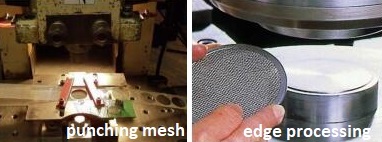Extruder screens, also known as filter screens or screen packs, are used in the plastic extrusion process to filter out contaminants and ensure a consistent flow of material. Here is a description of the typical processing steps involved in manufacturing extruder screens:
Material Selection: Choose the appropriate material for the extruder screen based on the application requirements. Common materials include stainless steel, nickel alloys, or other corrosion-resistant metals. The material selection depends on factors such as the temperature, pressure, and chemical compatibility with the extruded material.
Mesh Cutting and Shaping: The woven mesh is cut into the desired size and shape for the extruder screen. This can involve trimming the edges to achieve the required dimensions or custom shapes to fit specific extruder equipment. The mesh may be further processed to add mounting frames or edge reinforcements if necessary.
Edge Treatment: The edges of the extruder screen may undergo additional treatment to ensure smooth and safe handling during installation. This can involve processes such as deburring or edge polishing to remove any sharp edges or burrs.
Inspection and Quality Control: The extruder screens are inspected to ensure they meet the required specifications. This includes visual inspections for any defects or irregularities in the mesh, measurements of wire diameter, mesh size, and open area, and quality control checks to ensure the overall performance and consistency of the screens.
Packaging and Delivery: Once the extruder screens pass the quality control checks and any additional surface treatments, they are properly packaged to protect them during transportation. The screens are then shipped to the customers along with any necessary installation instructions or documentation.
